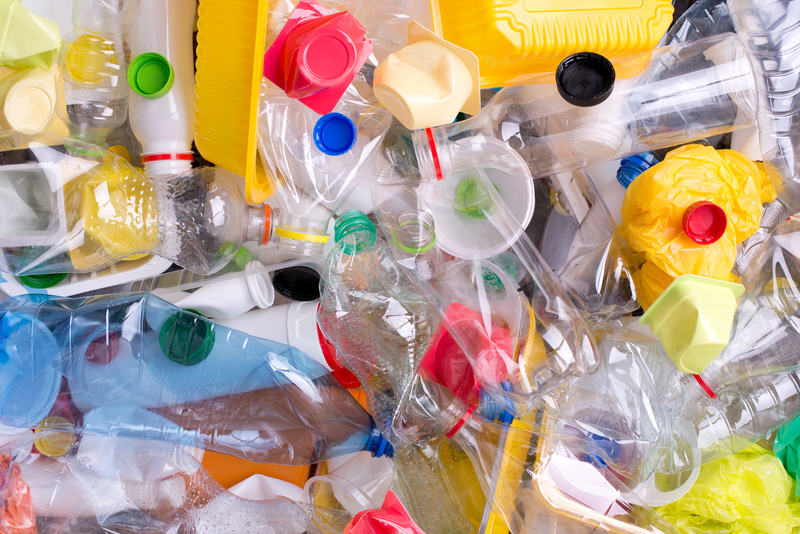Community Initiatives for PPE Waste Management: Building a Cleaner Future
The COVID-19 pandemic triggered an unprecedented surge in the use of Personal Protective Equipment (PPE) such as masks, gloves, face shields, and protective suits. While PPE has become essential in safeguarding individuals from infection, its improper disposal has led to a new environmental challenge: massive increases in PPE waste. Addressing this issue requires innovative and collective action. In this comprehensive article, we will explore various community-based strategies and initiatives for managing PPE waste, highlight their significance, and provide practical steps for effective implementation.

Why Is PPE Waste Management Important?
PPE is typically designed for single use and consists of materials--like plastics and synthetic fibers--that decompose very slowly. When discarded improperly, PPE can:
- Clog sewage systems and waterways, causing flooding and ecological harm
- Release microplastics, impacting marine and terrestrial wildlife
- Contribute to landfill overflow and increased carbon footprint
- Pose infection risks to waste pickers and sanitation workers
These impacts underline the urgent need for PPE waste management solutions that are sustainable, safe, and inclusive. That's where community-based approaches play a pivotal role.
The Power of Community Initiatives
Community initiatives for managing PPE waste unite local governments, organizations, schools, businesses, and residents. Grassroots efforts can fill gaps left by government services and adapt to the unique needs of each locality. Moreover, engaging the community directly can raise awareness, foster behavioral changes, and create lasting environmental benefits.
Types of Community Initiatives for PPE Waste
- Educational Campaigns: Informing residents about the dangers of improper PPE disposal and the correct methods to dispose of PPE waste.
- PPE Drop-off Points: Designating and maintaining special bins or collection centers for used PPE.
- PPE Recycling Projects: Collaborating with recycling organizations to divert PPE waste from landfills.
- Incentive Programs: Offering rewards or recognition for responsible PPE waste disposal.
- Partnerships with Businesses and Schools: Enlisting workplaces and educational centers to lead by example.
- Clean-Up Drives: Mobilizing volunteers to regularly remove discarded PPE from public spaces.
Developing Effective PPE Waste Management Strategies
If your community is ready to tackle PPE waste, consider these steps for an impactful initiative:
1. Assessing the Local PPE Waste Situation
- Monitor public spaces, water bodies, and residential areas for PPE litter.
- Engage local sanitation workers for feedback on problem areas.
- Estimate the volume and types of PPE waste generated.
*Understanding the scope of the problem* is crucial to tailoring solutions that are relevant and scalable.
2. Educating and Empowering Residents
Awareness is the first step in changing behaviors. Community initiatives for PPE waste management often begin with education. Effective tactics include:
- Distributing informational brochures or posters at local shops, health clinics, and community centers.
- Conducting workshops on the risks associated with PPE waste and how to minimize contamination.
- Leveraging social media platforms or community WhatsApp groups to share tips and updates.
- Inviting local medical professionals or environmental activists to speak about PPE waste impact.
*Empowered residents* are more likely to practice safe and eco-friendly disposal habits.
3. Setting Up Dedicated PPE Waste Collection Points
- Install clearly marked, secure bins specifically for used masks, gloves, and other PPE.
- Place collection points in high-traffic areas such as markets, bus stops, schools, and offices.
- Develop guidelines for safe PPE handling--including instructions for double bagging and sealing contaminated items.
- Designate responsible volunteers or community staff to monitor and empty bins regularly.
Specialized collection points help separate PPE waste from general waste, reducing contamination risks and easing subsequent handling or recycling.
4. Partnering with Local Businesses and Organizations
- Encourage offices, shops, and restaurants to provide PPE bins for employees and customers.
- Collaborate with recycling companies interested in piloting PPE recycling technology.
- Work with waste management services to ensure safe transportation and treatment of PPE collections.
- Involve local factories in exploring alternative production or upcycling of used PPE materials.
5. Organizing Community Clean-Up Drives
Enlist volunteers or sanitation workers to:
- Collect improperly discarded PPE from parks, streets, riversides, and beaches.
- Supply participants with gloves, grabbers, and safe collection bags.
- Ensure the proper disposal of collected waste at authorized facilities.
- Use the event to educate passersby about the importance of proper PPE disposal.
6. Exploring PPE Waste Recycling and Upcycling
While recycling PPE can be challenging due to contamination risks, some communities have successfully piloted recycling and upcycling projects:
- PPE-to-Bricks: Turning used masks and gloves into road paving materials or bricks by processing them at high temperatures.
- PPE Art Installations: Involving local artists to create awareness through eco-art made from sanitized PPE waste.
- PPE-to-Energy: Incinerating PPE waste in waste-to-energy facilities with pollution control measures.
- PPE Reuse: For certain professional-grade PPE, setting up safe sterilization and reuse protocols where feasible.
Examples of Successful Community PPE Waste Initiatives
1. The 'Mask Recycler' Program - India
Some Indian cities have launched 'Mask Recycler' units in partnership with startups and municipal bodies. Collection bins were placed outside hospitals, pharmacies, and street corners. The collected masks are sanitized and shredded to make road construction materials, showing how localized solutions can contribute to both public health and infrastructure.
2. The PPE-2-Project - United Kingdom
Communities in the UK have piloted the PPE-2-Project, which converts polypropylene PPE waste into plastic pellets for manufacturing garden furniture and construction materials. Community volunteers collect and segregate PPE, while educational campaigns ensure high participation rates.
3. River Clean-Up Campaigns - Southeast Asia
Various river-cleaning groups have expanded their scope to include PPE collection, offering incentives such as food coupons in exchange for a certain weight of collected masks and gloves. These interventions have reduced visible PPE pollution in rivers and supported local livelihoods.
4. Local Innovation in Kenya
In Kenya, entrepreneurs and women's groups mobilized quickly, collecting used masks and gloves to produce eco-bricks for community projects. Their success demonstrates how grassroots innovation can address environmental threats while creating economic opportunities.
The Role of Policy and Government Support
While community initiatives are vital, government policies & infrastructure greatly influence their success. Effective approaches include:
- Providing training and resources for safe PPE handling and disposal
- Setting up robust PPE waste collection and processing systems
- Mandating separate collection for infectious or medical waste types
- Encouraging public-private partnerships to scale successful models
- Supporting research for alternative, biodegradable PPE materials
*Government support amplifies the impact and reach of any community-level PPE waste management effort.*
Challenges in Community PPE Waste Management
Despite best intentions, community programs may face obstacles such as:
- Reluctance to touch or collect contaminated PPE due to infection fears
- Lack of PPE-specific disposal or recycling infrastructure
- Insufficient funding or volunteer manpower
- Mixed communication leading to confusion about safe practices
- Stigma associated with waste-picking activities
Continuous education, protective measures, and transparent communication are vital to overcoming these hurdles.
Future Trends and Innovations in PPE Waste Management
The future of community PPE waste management will likely see greater integration of technology and sustainable design. Emerging trends include:
- Mobile apps for reporting and tracking PPE litter hotspots
- Development of advanced sterilization machines for safe PPE recycling
- Biodegradable and compostable PPE replacing plastic-heavy items
- Automated sorting of PPE waste using AI and robotics
- Community monitoring via drones and data analytics
- Global sharing of best practices and collaborative learning platforms

How You Can Get Involved in PPE Waste Management
Want to make a difference in your community? Here's how:
- Join (or start) a local group focused on cleaning and managing PPE waste
- Use designated PPE bins and encourage others to do the same
- Contact your city officials about supporting or funding PPE waste initiatives
- Share educational materials within your network
- Volunteer for collection, recycling, or public awareness campaigns
- Support companies and innovators working on eco-friendly PPE alternatives
Conclusion: Building Resilient, Sustainable Communities
Community initiatives for PPE waste management are more than just a response to a pandemic-driven crisis; they are a chance to build collective responsibility, protect our cities and natural ecosystems, and innovate for a greener future. Whether through education, organized collection, recycling projects, or local entrepreneurship, communities have immense power to drive positive environmental change. Join the movement, get involved, and be part of the solution for a cleaner, healthier world for all.
If you found this guide helpful, please share it and inspire more communities to take up the challenge of PPE waste management. Together, we can make a world of difference.
